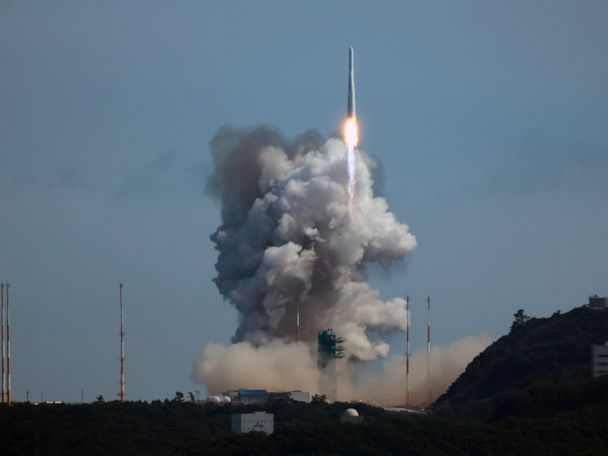South Korea announced on Tuesday that it had successfully placed a working satellite into orbit using its first home-built rocket. This brings South Korea one step closer to achieving its dream of becoming a new player in the space industry and deploying its own spy satellites to better monitor North Korea.
Tuesday at four o’clock in the afternoon, the three-stage Nuri rocket, which was constructed by the government’s Korea Aerospace Research Institute in collaboration with hundreds of local companies, lifted off from the Naro Space Center in Goheung, which is located on the southwestern most tip of South Korea.
Seventy minutes after the rocket’s liftoff, South Korea made the announcement that the Nuri spacecraft had been successful in its mission to place a functioning satellite weighing 357 pounds and a dummy satellite weighing 1.3 tonnes into orbit 435 miles above the surface of the Earth.
It was a moment of national pride, with the takeoff carried live on all of the main TV stations in the country, as well as on its YouTube scientific channels. In the days leading up to the launch, the government and the local media portrayed the Nuri mission as a monumental occasion that would enable South Korea to establish a footing in space technology. This is the most recent high-tech sector in which the nation has opted to become active.
During a press conference that was broadcast throughout the country, the Minister of Science and Technology of the South Korean government, Lee Jong-ho, said that the mission had been successful. He stated that “South Korea’s science and technology made a major stride forward today.” “We have built the framework for launching our own satellites whenever we want to, no longer needing to rely on the rockets and launch centres of other nations,” said one of the researchers.
South Korea has, for many years, had the desire to become a member of the exclusive group of countries who are able to place communications and other satellites in orbit via rockets developed on their own soil. In addition to this, it intended to launch its own own surveillance satellites into orbit so that it could keep a closer eye on the expanding nuclear and missile danger posed by North Korea.
2013 was the first time that South Korea successfully launched a satellite into orbit for the sake of scientific study and development, after a series of setbacks and delays. However, the two-stage rocket known as Naro that was deployed for that flight was co-developed by Russia and the United States. The 200-ton Nuri, also known as the Korea Space Launch Vehicle-II, was developed by South Korea using its own own technology at a cost of almost 1.9 trillion won ($1.5 billion), which was paid by South Korea.
During the first test flight of the Nuri rocket in October of last year, the rocket sent a 1.5-ton dummy satellite 434 miles above the surface of the Earth. However, it had a malfunction in its oxidizer tank and burnt out earlier than anticipated. As a result, it was unable to provide the fake satellite with sufficient speed to stabilise and remain in orbit.
During Nuri’s second test flight on Tuesday, the spacecraft was carrying not just a fake satellite weighing 1.3 tonnes but also a performance verification satellite weighing 357 pounds. This was the first time that South Korea successfully launched an actual functional satellite on board a rocket that was developed in-country.
The launch that took place on Tuesday brought attention to the weapons race taking place on the Korean Peninsula. Because South Korea does not have its own military surveillance satellites, it depends on satellites operated by the United States to keep an eye on North Korea. Despite this, South Korea has long desired to launch its own satellites into orbit in order to establish its own “eyes and ears” in space in response to the growing missile danger posed by the North.
Kim Jong-un, the current leader of North Korea, said during a meeting of the Workers’ Party in 2017 that his country has successfully finished the design of a military surveillance satellite. He said that the satellite will be launched by his nation in the not too distant future.
North Korea is not allowed to launch space rockets because the United Nations Security Council believes that Pyongyang is using them to construct long-range ballistic missiles, which is a violation of the resolution passed by the council. North Korea defied this restriction by launching satellite space vehicles prior to successfully testing three intercontinental ballistic missiles in 2017. In 2017, North Korea was successful in all three of its missile tests.
According to authorities from the United States and South Korea, North Korea carried out six missile tests involving intercontinental ballistic missiles (ICBMs) or components of ICBMs between February 27 and May 25. North Korea claimed that it was conducting tests of a satellite launch vehicle during the first two of these explosions.
North Korea has accused South Korea and the United States of “double standards” for growing their own space programmes while criticising the North’s space initiatives as a cover for a weapons development. Both countries have expanded their own space programmes.
